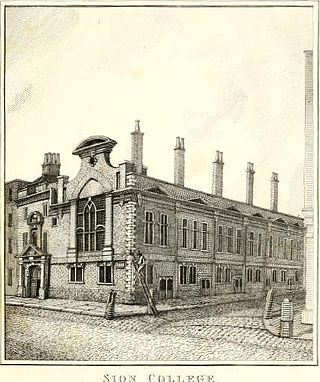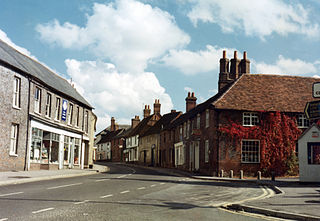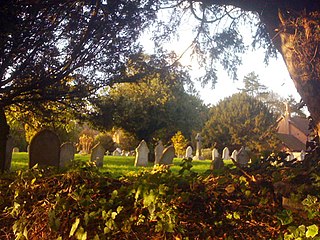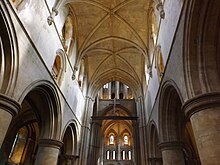
Sherborne Abbey, otherwise the Abbey Church of St. Mary the Virgin, is a Church of England church in Sherborne in the English county of Dorset. It has been a Saxon cathedral (705–1075), a Benedictine abbey church (998–1539), and since 1539, a parish church.

The Cathedral Church of the Holy Trinity,Saint Peter, Saint Paul and Saint Swithun, commonly known as Winchester Cathedral, is the cathedral of the city of Winchester, England, and is among the largest of its kind in Northern Europe. The cathedral is the seat of the Bishop of Winchester and is the mother church for the ancient Diocese of Winchester. It is run by a dean and chapter, under the Dean of Winchester.

Sion College, in London, is an institution founded by royal charter in 1630 as a college, guild of parochial clergy and almshouse, under the 1623 will of Thomas White, vicar of St Dunstan's in the West.

Kingsclere is a large village and civil parish in Hampshire, England.

William Edington was an English bishop and administrator. He served as Bishop of Winchester from 1346 until his death, Keeper of the wardrobe from 1341 to 1344, treasurer from 1344 to 1356, and finally as chancellor from 1356 until he retired from royal administration in 1363. Edington's reforms of the administration – in particular of royal finances – had wide-ranging consequences and contributed to the English military efficiency in the early stages of the Hundred Years' War. As Bishop of Winchester, he was responsible for starting an extensive rebuilding of Winchester Cathedral, and for founding Edington Priory, the church of which still stands today.
John Watson (1520–1584) was Bishop of Winchester in the 1580s.
John White was a Headmaster and Warden of Winchester College during the English Reformation who, remaining staunchly Roman Catholic in duty to his mentor Stephen Gardiner, became Bishop of Lincoln and finally Bishop of Winchester during the reign of Queen Mary. For several years he led the college successfully through very difficult circumstances. A capable if somewhat scholastic composer of Latin verse, he embraced the rule of Philip and Mary enthusiastically and vigorously opposed the Reformation theology.
John Boxall was an English churchman and secretary of state to Mary I of England.
Thomas Manningham (1651?-1722) was an English churchman, bishop of Chichester from 1709.

The Hospital of St John Baptist without the Barrs is a building with an adjacent chapel in the city of Lichfield, Staffordshire, England. It is a Grade I listed building.

St Faith's Church was the parish church of St Cross, a village just south of Winchester, Hampshire, England. It was situated on the northern side of what is now Kingsgate Road at its junction with what is now St Cross Road. The church's graveyard is still there today. The church was demolished in 1507, and St Cross Church, part of the Hospital of St Cross, became the parish church.
The Hospital of St Mary Magdalene, Bawtry was a charity established in Bawtry in the thirteenth century. The surviving chapel building is now a masonic lodge and Grade II listed.
James Rowlandson D.D. was a Canon of Windsor from 1638 to 1639.

All Saints Church is an Anglican parish church in the village of Crondall, Hampshire, England. It is a Grade I listed building and stands at the highest point in the village. Much of the church dates from the Norman period, although the original central tower was replaced by a brick one at the north-east corner in 1659 and some alterations, particularly to the fenestration, the nave arcades and transepts, and the north porch, were made in two stages during the 19th century.
St. Anthony's Hospital was a medieval charitable house in the parish of St Benet Fink in the City of London. It was founded before 1254 as a cell by the Hospital Brothers of St. Anthony of Vienne in France.

The Church of St James in Bramley, Hampshire, England was built in the Norman period and has been added to since. It is a Grade I listed building.
William Fleshmonger(? -1541/42), the son of a Winchester College tenant, was born in Hambledon, Hampshire. He was a Doctor of Canon Law and Dean of Chichester during the turmoil of the English Reformation.














